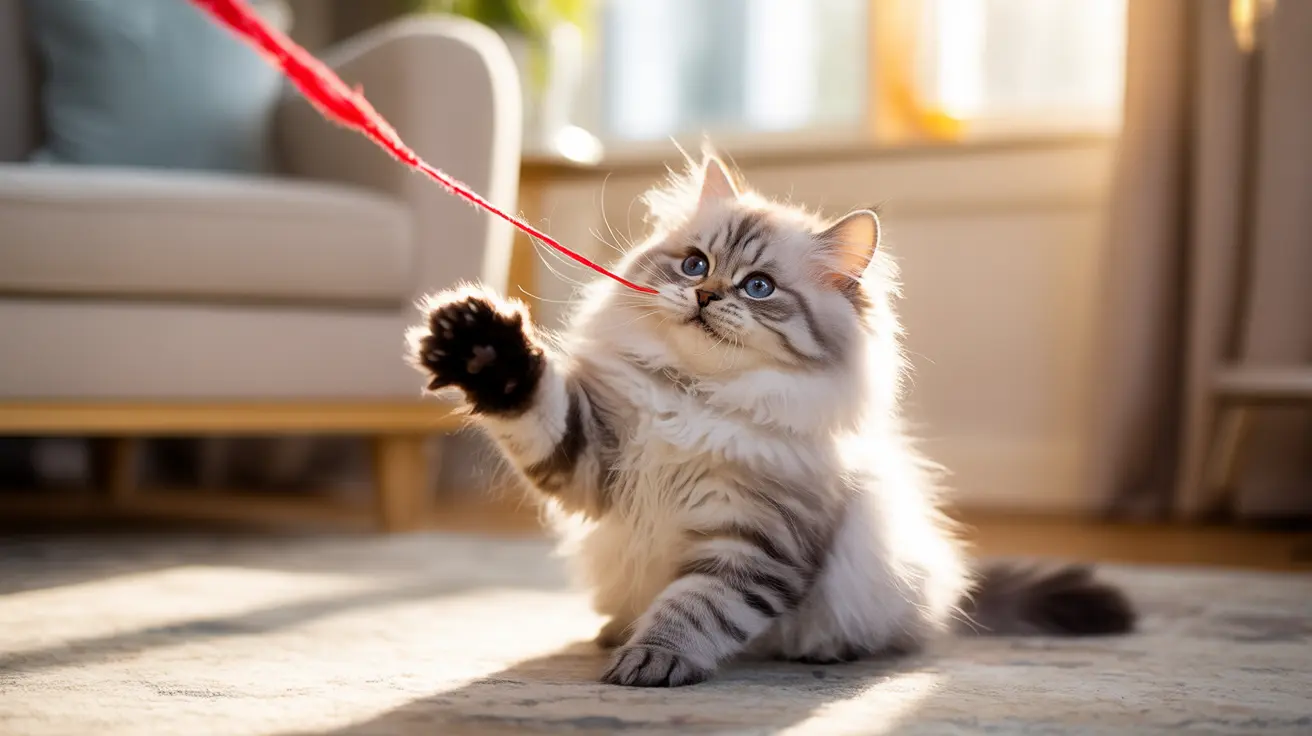When a cat eats thread, it can quickly become a life-threatening emergency requiring immediate veterinary attention. As a cat owner, understanding the risks and knowing how to respond could save your pet's life. This comprehensive guide will walk you through the dangers of thread ingestion, essential emergency steps, and crucial prevention strategies.
Why Cats Are Attracted to Thread
Cats have a natural hunting instinct that makes string-like objects irresistible. Their predatory drive compels them to chase, catch, and sometimes accidentally swallow items like thread, yarn, or ribbon. The barbed structure of a cat's tongue can actually make it difficult for them to stop once they start ingesting these materials.
The Hidden Dangers of Thread Ingestion
When a cat swallows thread, it can become what veterinarians call a "linear foreign body." This seemingly harmless material can cause severe internal damage in several ways:
Intestinal Complications
- Thread can anchor in one spot while continuing through the digestive tract
- This creates a sawing motion that can cut through intestinal tissue
- The intestines may bunch up, leading to potentially fatal complications
Additional Risks
- Possible strangulation of intestinal segments
- Risk of internal bleeding
- Potential for severe infection if perforation occurs
- Increased danger if a needle is attached to the thread
Emergency Warning Signs
Watch for these critical symptoms that indicate your cat has ingested thread:
- Visible thread hanging from mouth or anus
- Excessive drooling or gagging
- Vomiting or diarrhea
- Loss of appetite
- Lethargy or unusual behavior
- Abdominal pain or swelling
Immediate Steps to Take
If you suspect your cat has swallowed thread, follow these crucial steps:
- Do NOT pull on any visible thread
- Keep your cat calm and still
- Contact your veterinarian immediately
- Transport your cat carefully to avoid additional internal damage
Treatment Options and Recovery
Veterinary treatment may include:
- Physical examination and imaging
- Endoscopic removal if possible
- Surgery if necessary
- Post-procedure monitoring and care
Recovery time varies depending on the severity of the situation and whether surgery was required. Most cats recover well with prompt treatment and appropriate aftercare.
Prevention Strategies
Protect your cat by implementing these safety measures:
- Store all sewing supplies in sealed containers
- Keep thread, yarn, and string locked away
- Supervise play with string toys
- Provide cat-safe alternatives for play
- Regular environmental checks for hazardous items
Frequently Asked Questions
What are the signs that my cat has eaten thread or string and needs immediate veterinary care?
Look for visible thread hanging from your cat's mouth or anus, vomiting, lethargy, loss of appetite, and abdominal pain. Any of these signs warrant immediate veterinary attention.
Why do cats often swallow thread, yarn, or string, and how dangerous is it for them?
Cats are naturally attracted to string-like objects due to their hunting instincts. These items are extremely dangerous as they can cause intestinal obstruction, perforation, and potentially fatal complications.
What should I do if I see thread hanging from my cat's mouth or rear end?
Never pull on visible thread as this could cause severe internal damage. Keep your cat calm and seek immediate veterinary care.
Can my cat pass swallowed thread or a needle without surgery?
While some cats might pass small amounts of thread naturally, it's dangerous to wait and see. Always consult a veterinarian immediately, as surgery is often necessary to prevent life-threatening complications.
How can I prevent my cat from ingesting thread, yarn, or other string-like objects?
Store all sewing supplies securely, keep string-like objects out of reach, supervise play with string toys, and provide appropriate cat toys designed for safe play.
Remember, when it comes to thread ingestion, quick action can mean the difference between life and death for your cat. If you suspect your cat has swallowed thread or any string-like object, don't wait for symptoms to develop—contact your veterinarian immediately.






